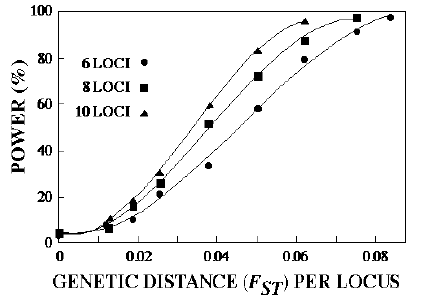

Figure 1. Power to detect a mixture of two populations (i.e. the probability of rejecting the null hypothesis when it is false), as a function of the average genetic distance (FST) between them (from Waples and Smouse 1990). Results are from 500 replicate computer simulations with sample size, N = 100, mean allele frequency q = 0.8 for each locus, and a population mixture ratio of 1:1. Note that FST for most marine animals with pelagic larvae is usually much less than 0.05, suggesting that a mixture would only be detected about 10-50% of the time. Power declines from that graphed with declines in sample size, mean allelic frequencies > 0.8, deviations from a 1:1 mixture, and time since a mixing/hybridization event.